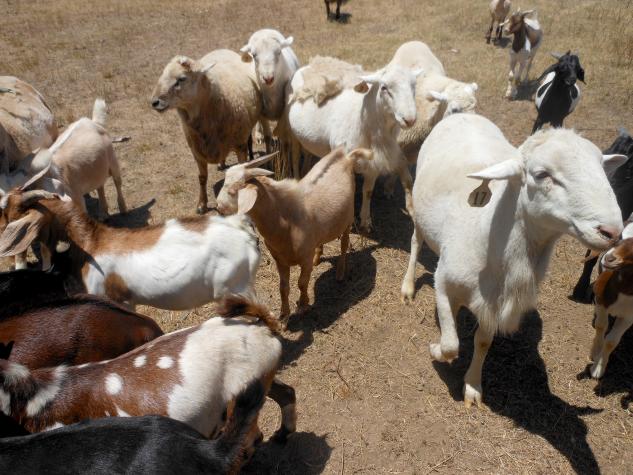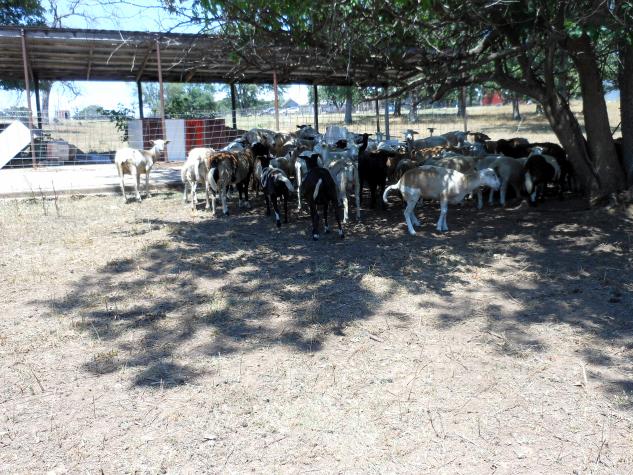OSCEOLA, Mo. – Producers of small ruminants have had to deal with drought in nearly every part of Missouri this year trying to keep their animals healthy.
“The biggest concern in drought for sheep and goats is lack of feed for the animals,” said David Brown, the University of Missouri Extension’s new livestock field specialist in small ruminants. Drought conditions affect nutrient quality of forage, leading to weight loss in sheep and goats because body reserves are being depleted.
Brown said most animals during drought are predisposed to diseases, and some even die, so it’s important to prepare animals for strategies that will help them cope and maintain body condition.
Management strategies
Selling. Sell the older stock first, especially those with poor reproductive performance.
Relocating. Options to minimize grazing pressures on drought-stressed pastures include moving the animals to new grazing land with available forage or to terminal markets for slaughtering, providing cash to support other animals.
Early weaning and parasite control. Nursing does/ewes require higher energy and protein than dry does/ewes.
Herd grouping. Producers should consider grouping livestock based on their physiological status.
Drought feeding. The main goal of drought feeding is survival or maintenance. Producers should employ a body condition scoring system (BCS) to determine which animals require supplemental feeding during drought.
Feeding needs of small ruminants
Meeting the nutrient requirements with the available feed should be the goal of the producers, said Brown.
Protein. Provide supplemental protein to animals grazing low-quality forage or hay or when BCS drops below 2 on a 5-point scale.
Energy. In drought conditions, energy is typically the most limiting nutrient in the pasture. Producers should feed lowest-cost energy supplements to the animals. High-energy grain should be introduced slowly to the flock.
Minerals and vitamins. The lack of green fodder during drought may result in deficiencies of vitamins A and E. Consider supplementing with a mineral mixture containing vitamin A.
Monitor poisonous plants
During drought, producers should be aware of poisonous weeds in their pastures. Plants that contain prussic acid (hydrocyanic acid) in the leaves should be avoided. These include wild cherries, peaches, plums and other stone fruits. Other toxic plants include milkweed, horsenettle, black nightshade, water hemlock, mayapple, Sudan grass, Bermuda grass, Johnson grass, pigweed and ragweed.
Consult your county extension center if you’re unsure of weeds and wild shrubs in your pasture, Brown said. Producers of small ruminants should follow local, regional and national drought advisories from drought early warning systems.
For more information on drought mitigation strategies, go to Drought Resources or contact your local MU Extension center.
Photos
Sheep and goats
Sheep and goats on drought-affected pasture in Sheldon, Mo. Photo by David Brown.
Sheep and goats
Sheep and goats seek shade in drought on a farm in Sheldon, Mo. Photo by David Brown.
Writer: Julie Harker

